Month: November 2013
Throwback Thursday: SNES Emulation
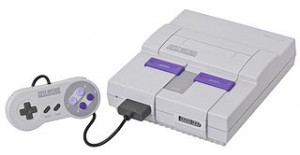
Thomas Holbrook II | The *Nixed Report
Growing up, we all had our favorite past times. Some played baseball, while others played video games. My favorite activity revolved around the latter, and one of my favorite consoles was the Super Nintendo Entertainment System.
Final Fantasy Mystic Quest, The Legend of Zelda: A Link to the Past, Super Metroid, and Super Castlevania IV were among my favorite games. The bad news is that the older the hardware becomes, the more likely it is to fail.
This is where emulation comes into play.
As it turns out, most console emulators will only be just accurate enough for the games to be playable. According to Byuu, who wrote quite an informative piece on Ars Technica:
These days, the most dominant emulators are Nestopia and Nintendulator, requiring 800MHz and 1.6GHz, respectively, to attain full speed. The need for speed isn’t because the emulators aren’t well optimized: it’s because they are a far more faithful recreation of the original NES hardware in software.
Now compare these to the older N64 emulator, UltraHLE, whose system requirements were a meager 350MHz Pentium II system. To the casual observer, it can be quite perplexing to see Mario 64 requiring less processing power than the original Mario Bros.
My experience in emulation is in the SNES field, working on the bsnes emulator. I adored the ideal behind Nestopia, and wanted to recreate this level of accuracy for the Super Nintendo. As it turns out, the same level of dedication to accuracy pushed requirements up into the 2-3GHz range, depending on the title.
Considering the hardware inside the SNES, requiring a high end computer makes sense. After all, one is mimicking an entire system in software. Byuu has since merged bsnes into a new project.
Wednesday Weekly Links: November 27, 2013
This week is going to be hectic for those working retail, and with a recent decision in a lawsuit, things may be heating up in that sector. This week’s links cover the thankfulness of old machines that can be brought back to life as well as a few other links worth checking out.
Unix
- Despite Prior Art, Newegg is Found Guilty of Patent Infringement (TechDirt): Despite industry experts testifying that the patent was invalid and explaining why, the jury found Newegg guilty of using a patent regarding e-commerce. Newegg is appealing the decision. Those who do any form of e-commerce may want to keep an eye on this case.
- Distros for Older Computers (Make Tech Easier): Have some older machines collecting dust? You just might be able to bring them back to life using Wary Puppy, TinyCore, Bohdi, CrunchBang, antiX, and WattOS (just to name a few).
- Linux Mint Debian Edition: The distro that’s currently being run in the *NixedLabs at the moment and is the current stop for the DistroJourney of 2013. It’s based on Debian Testing, with updates being bundled in packs to maintain system stability. Though there are rough edges, the technology utilized is interesting, especially the live system installer, which is home grown courtesy of Clem, the lead developer of Mint.
Overlooked Pop Culture
- Dr. Who: The Day of the Doctor (2013) 50th Anniversary Special (An American View of British Science Fiction): Dr. Who is Growing in popularity, and Stephen Kelley relays his experience of watching the special in 3-D. The movie trivia was replaced with Dr. Who trivia, and peoples’ minds were blown upon discovering that The Beatles made an appearance on an episode. Over all, he found the experience to be favorable.
- Black Friday Deals for Gamers (VG Chartz): For you gamers out there, this is a list of some of the best places to go to get the best deals for Black Friday.
- Soon, Men May Be Able to Carry Babies (Modern Women Digest): Dr. Alfred Von Bauder has been working on a synthetic uterus for quite some time, and apparently has had some success in testing it. This one’s worth reading, and may very well weird more than a few people out. Arnold Schwarzenegger, eat your heart out.
Happy Thanksgiving to Everyone
Throwback Thursday: The Green Ranger

Thomas Holbrook II | The *Nixed Report
I remember watching Mighty Morphin Power Rangers growing up. My favorite ranger was Tommy Oliver. As the Green Ranger, he had a unique look as well as a weapon that set him apart from his team members.
Everyone else had adjustable laser pistols strapped to them, while he had the dagger that could summon the Dragonzord. His shield could be transferred to another ranger for extra protection, and his fighting skills were something to behold.
So this Throwback Thursday is dedicated to the Green Ranger, and the person who played him.
Note: Image and multimedia utilized under Fair Use.
Wednesday Weekly Links: November 20, 2013
In one week, we’ll be having Thanksgiving. We go old school on the technology side of things, take a satirical look at a popular form of food, and delve into our inner geek a little bit.
Unix
- The NSA DID ask Linus Torvalds to leave backdoors in the Linux kernel: This one shouldn’t be too surprising, but we’ll throw this one out there all the same.
- 6502.org: The website that talks about the processor that was used by Apple and other companies in their computers and electronics. Their Google+ page circled ours after publishing the previous Throwback Thursday.
- Oldcomputers.net: Hat tip to Stephen Mudd for bringing this link to our attention. This site explores older computers, the hardware specifications, and more. For historical reference as well as nostalgia, feel free to check it out.
Overlooked Pop Culture
- Pepperoni is for idiots, according to Maddox: This one’s a bit older, but with Thanksgiving just around the corner, this is more than appropriate. Sometimes certain forms of food just aren’t satisfying. Maddox breaks down why pepperoni isn’t real food.
- Deadline Live: Jack Blood is a radio talk show host who talks about a variety of topics that are not often mentioned in the mainstream.
- Bulbagarden: For those PokéMon fans out there, this site’s encyclopedia is extensive. Detailed information on each PokéMon and characters from the video games, manga, and anime are all available.
Throwback Thursdays: Apple II DOS 3.1 Source Code Released!
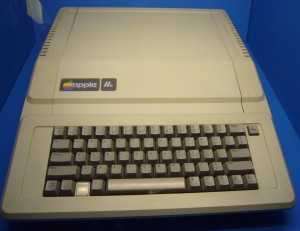
Thomas Holbrook II | The *Nixed Report
For those who remember the old days of Apple, where a rainbow colored fruit was their logo, there is now a chance to reminisce in a new way. The source code of version 3.1 of Apple DOS was released.
As reported by The Register, there’s over 4,000 lines of code. More information as available through the Computer History Museum and Paul Laughton, the developer of the operating system.
Wednesday Weekly Links for November 13, 2013
Welcome back to Wednesday Weekly Links, where we scour the Internet and other sources for news items that are often overlooked. This week, we focus on innovation in computer software and a change at a major software company as well as pro wrestling, a government agency, and a really strange 911 call.
Unix
- Microsoft Drops Reward and Curve System (MaximumPC): Microsoft is scrapping the curve system, because it caused a bit of tension between employees. Emphasis is going to be placed on team work and employee growth and development.
- Fedora 20 Goes Beta (ZDNet): Nicknamed “Heisenbug,” the beta release of version 20 of Red Hat’s community oriented operating system brings enhancements to virtualization and clouds, updated development software, GNOME 3.10, and an added emphasis on the ARM architecture. Hat tip to Steven J. Vaughn-Nicols
- More AMD Patches Released (Phoronix): Those who follow hardware-based encryption solutions and use Linux may be jumping for joy at this. AMD has released drivers for a Cryptographic Coprocessor. A variety of encryption standards is supported through said driver including SHA and AES among others. Hat tip to Michael Larabel.
Overlooked Pop Culture
- US Postal Service Bailed Out…. by Amazon? (Layfield Report): Amazon has made an arrangement with the US Postal Service for their Prime customers in time for the holiday season. In New York City and Los Angeles, Sunday delivery of packages will soon be possible (with plans to expand to other areas). Hat tip to Stephen Kelley.
- 911 Called Over Snoring Partner (The Smoking Gun): A Wisconsin man called 911 due to a woman snoring too loudly in his bed. It turned out that she had sleep apnea, and he was advised that it wasn’t a police matter.
- Buff Bagwell Speaks on Different Issues in Terms of Pro Wrestling (24 Wrestling): Bagwell was interviewed about a variety of topics including his brief run in WWE. He acknowledged that the match between himself and Booker T was a horrible idea and both were booed out of the arena.
DistroJourney 2013: Oracle Solaris 11
Thomas Holbrook II | The *Nixed Report

I tried running Oracle Solaris on two of my machines, and was going to use it as the OS of choice for the next few weeks. Unfortunately, the test was cut short, so the evaluation will be written here instead of in the next issue of the magazine.
The Live-DVD was used for installation.
The Interface and Included Apps
Gnome 2.3 is used for the desktop interface. It comes with Firefox, Thunderbird, GIMP, Rythmbox, Brasero, and a handful of other applications.
What I Liked and What Needs Improvement
The live environment worked on the Breeze. All the relevant hardware was detected and I was able to go online. The Intel/Nvidia desktop on the other hand was a different story.
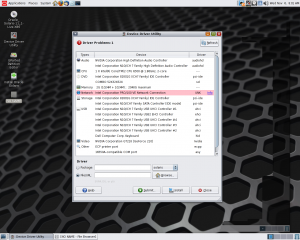
Either the driver was missing or was not loaded properly. I was in no mood to either hunt down the driver or try some other fix to force the hardware to work correctly. On the upside, the Nvidia drivers worked and I had 3D acceleration.
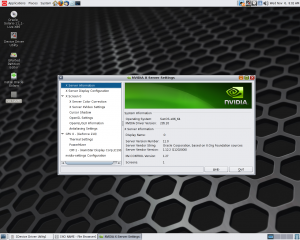
What was also perplexing was the fact that there was a category for Office in software management, but no word processing listed. I know Solaris 11 is not supposed to be used on productivity machines, but why not have Abiword at the very least?
After all, GIMP 2.6 is included.
Then again, this is Oracle we’re talking about here. This company is known more for their enterprise driven database products than operating systems and programming platforms.
Conclusion
Unfortunately, it seems that Oracle has ruined a potentially good product. Even for developers, it can be a bit cumbersome to compile all the desired software from source just for the sole purpose of having the desired applications installed.
The online repositories are sparse. The version of Firefox ESR is also out of date. For that reason, this review will be on this site while the next stop on the Distro Journey for 2013 will be Linux Mint Debian Edition.
Issue #6 Hot Off The Digital Press!
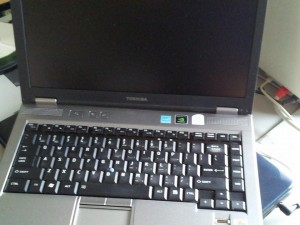
The sixth issue of the digital magazine is available for download. The Toshiba Tecra M9 has been adopted and is being brought back to life. Netrunner OS is evaluated for this year’s DistroJourney series and Thomas reconnects with his inner geek.
Unix
DistroJourney 2013: Netrunner OS is an Ubuntu-based system that uses KDE. How does it stack up in terms of performance? Find out in this issue.
Overlooked Pop Culture
The college anime club that Thomas was a part has gone through a significant transformation. They are now known as the Animation Culture Society. The student organization has grown and is allying itself with other groups.